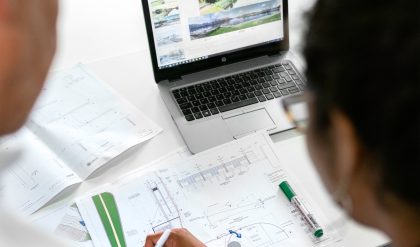Author(s: Gaugarin Oliver Artificial Intelligence. Neuroscience biomedical engineer Chethan Pandarinath creates prosthetics, but not any prosthetics. The Emory University researcher and Georgia Tech researcher have a common goal: to allow paralyzed people to use their arms like their own via brain signals. Pandarinath plans to accomplish this by analysing brain activity recordings from paralyzed individuals to find neuronic patterns that correspond to certain movements. These patterns may be used to power artificial intelligence systems (AI) connected to prosthetic legs, which would allow for similar movements control of what is essentially an external object attached to the body. Pandarinath states in Nature that if this sounds complex, it’s probably because it is. It’s not science fiction. This is largely due to AI and neuroscience’s increasing convergence. AI and neuroscience are two sides of the same coin. Both fields share the common goal to understand the mysteries of human cognition. This means that we need to understand how our brains work, and this can help us design new neural networks. It also helps us confirm the accuracy of existing algorithms. Indeed, the continued improvement of modern AI and deep learning systems (in terms of accuracy, resource-intensiveness, and the ability to learn and adjust more effectively with less data) requires a fundamental understanding of the workings of the human brain. The most powerful connection between AI and neuroscience lies in reward-based learning. This concept has been a focal point of computer science research since the 1980s. Reward-based learning can be taught on its own using built-in punishments and rewards systems. These systems do not require human instruction. Instead, they use reward prediction systems that constantly adjust to the environment based on past experience. This type of reward-based system includes temporal difference learning (TD), a milestone approach that was developed in late 1980s. TDlearning is unique in that it constantly samples the environment, and adjusts its reward predictions based upon what has been received versus expectations. TD Learning matches the expected vs. actual rewards at each time. This allows for continuous adjustment of expectations and improves algorithmic accuracy. DeepMind is an AI research company that claims the eureka moment that permanently linked AI and neuroscience occurred just a few decades later in the middle s. They were able, through studying brains from live animals, to discover that some dopamine neurons would fire if they received more reward or less than anticipated. The hypothesis that the brain of humans also used a TD-learning algorithm was soon proposed by them. This theory has been validated through many other studies. AI research has shifted to deep reinforcement learning with advanced methods such as distributional reinforcement, which allows them to solve ever more complex problems. Because it can predict a wider range of rewards, distributional reinforcement learning is more effective than traditional TD-learning. A DeepMind paper, published in Nature recently, suggests that distributional reinforcement learning is also used by the brain. The authors report that they found dopamine neurons within the brain tuned to different levels. They write that if they were singing together, the voices would not be singing the exact same notes, but they would all harmonize — with each having a similar vocal register to a singer (bass and soprano). Artificial reinforcement learning systems use this variety of tuning to create a richer learning signal which greatly speeds up learning in neural networks. We speculate that the brain may also benefit from it. There are still many things we don’t understand about the brain. Researchers have not been able find a way to address the many disadvantages of AI algorithms over natural neural networks. Their insatiable appetite for huge training data sets and their need to expend enormous amounts of energy to make mistakes as fast as a toddler. While deep learning algorithms may seem simple compared to our brain’s intricate circuitry, even today’s most advanced AI algorithms can easily fail when faced with any situation outside of their intended purpose. Deep learning algorithms often require thousands of examples to learn, while humans can quickly pick up new concepts or skills with just one go,” Shelley Fan, neuroscientist and science writer, says. However, these two fields are improving and inspiring each other due to the common framework of reinforcement learning. This is partly because there have been many partnerships between researchers from both neuroscience and AI. Fan states that “Combining deep learning with brain-like natural structures could help us to create machines that can learn as fast, flexible, and intuitively, as we do humans.” Dr. Shimon Ullman of Weizmann Institute of Science says that neuroscience has many ways to improve AI and deep-learning. The current artificial neural network is relatively easy compared with the complexity found in the brain of the human being. This includes natural neurons. Researchers are just starting to discover their power. Artificial neural networks could be revolutionized if we have access to new information about the brain’s functions and behavior. Circuit connectivity. The connections between artificial neural networks, layers of neurons and their respective neuron levels are also quite simple in comparison to the intricate wiring within the brain. Understanding how neurons interrelate in the brain’s wiring could help to create more complicated connections in artificial neural networks. Innate cognitive structures. When a baby is born it has many deep-seated cognitive structures, such as the ability to recognise faces and hands. Researchers could use these structures to develop AI systems that solve difficult problems without any training by studying them. AI has a profound impact on neuroscience because the disciplines are in a mutually beneficial relationship. They can solve similar problems using different perspectives. AI’s ability to analyse larger data sets than scientists thought was possible a few years back is an important one. But there are other ways to use AI algorithms to help us reevaluate our understanding of how brains work when we perform complex movements and tasks. Google Brain’s Dr. David Sussillo says, “If you train a neural net to do it, then perhaps that will allow you to understand how the network works, and use that information to understand the biological data.” The intrinsic link between AI and neuroscience is something Emory University’s Pandarinath (the researcher who developed AI-infused prosthetics) knows well. He explains that the technology has come full circle, and is being used back to learn about the brain. This could lead to new therapies for many ailments. Maneesh Sahani of University College London’s Gatsby Computational Neuroscience Unit agrees. He says, “We are effectively studying the exact same thing.” In the first case, we are trying to figure out how mathematically this learning problem can be solved in order for it to be efficiently implemented by a machine. The other is the case where we are looking at the only existing proof it can be solved, which is the brain.” “How AI and Neuroscience Can Come Together to Benefit Both Disciplines and Society” was first published on Medium. People continue the discussion by highlighting and
Home Innovation The Benefits of AI and Neuroscience for Both Disciplines (and Societies)
THE FOREFRONT OF TECHNOLOGY
We monitors and writes about new technologies in areas such as technology, innovation, digitization, space, Earth, IT and AI.







